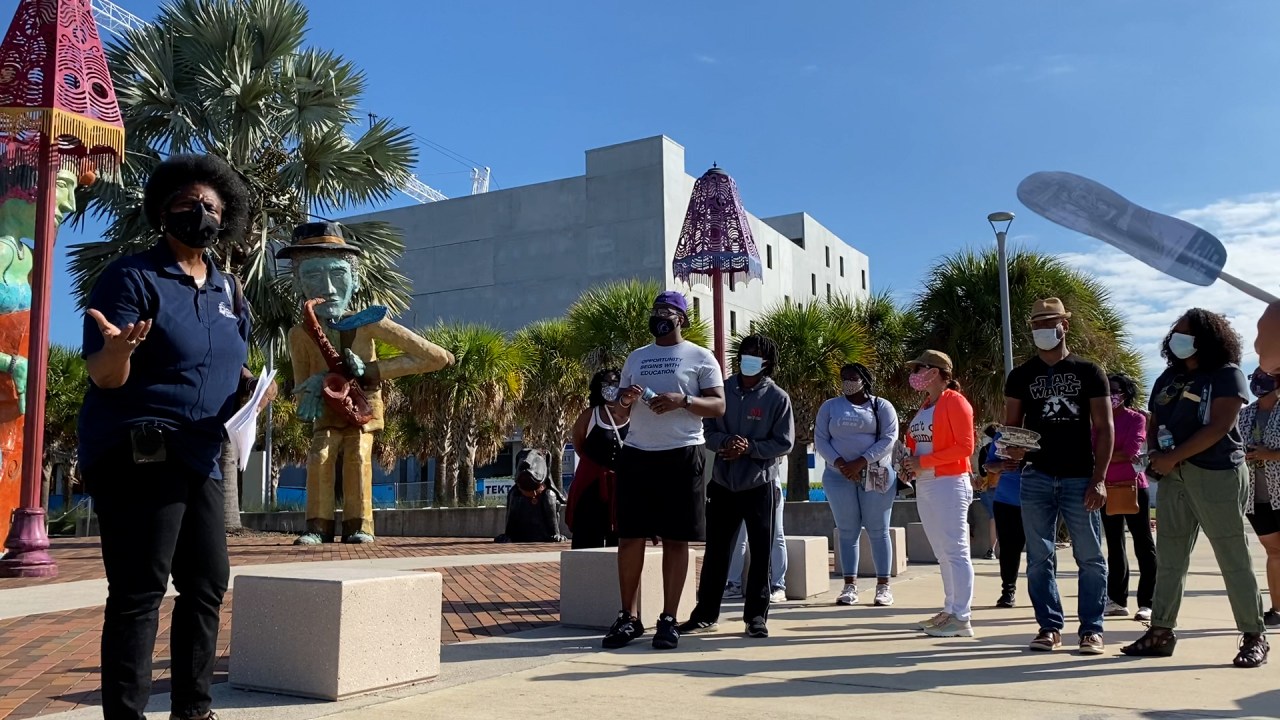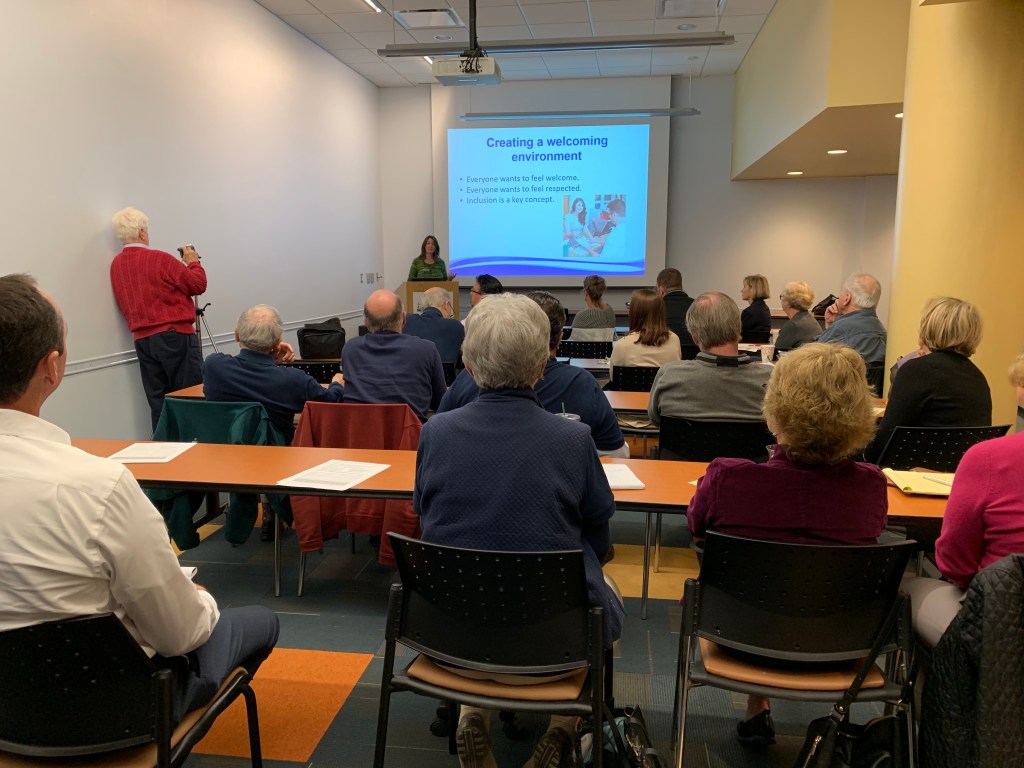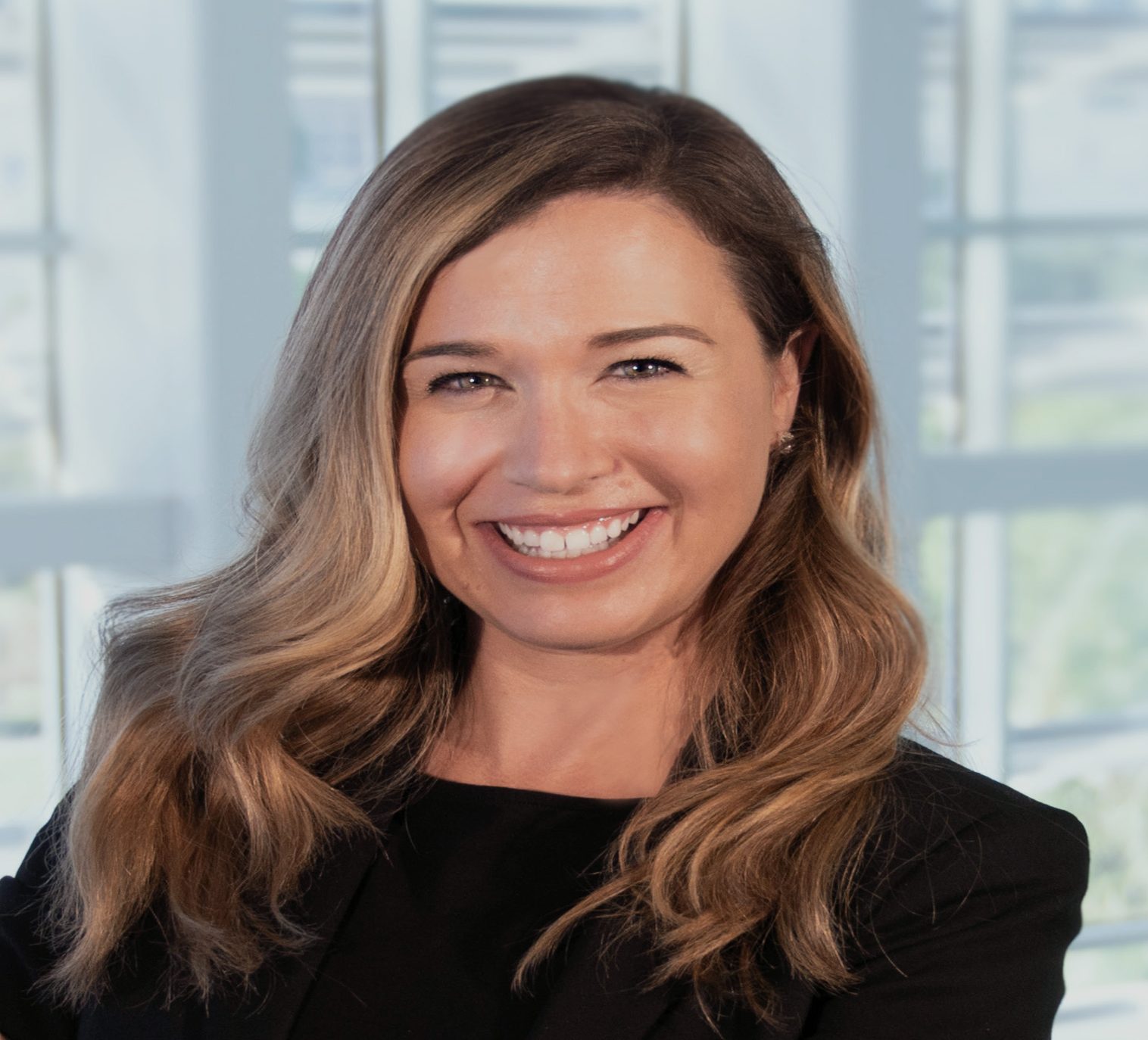
In the museum experience world, making visitors feel welcome is serious business. Our goal is to exceed guests’ standards for positive experiences, and nothing undermines that goal like a lack of inclusivity or accessibility. When a visitor feels unwelcome, it has a pervasive effect on their whole visit, making it difficult or even impossible for them to feel comfortable enough to interpret information, learn, and connect. But the good news is, any museum staff person coming in contact with your visitors can transform this outcome, giving visitors the sense of comfort and belonging that will contribute to an exceptional experience.
As a twelve-year visitor experience professional—and one who is so passionate about positive museum experiences that I recently wrote a book about them—I have watched museums become more conscious of this dynamic. As they embrace their role as community gathering places, they are recognizing their responsibility to serve their entire communities, and nowhere is this a more urgent priority than for those directly interfacing with visitors. To learn how museums are tackling this urgent priority, I talked to visitor experience professionals around the country to learn what new approaches are taking root in making front-line museum staff into strong advocates for diversity, equity, accessibility, and inclusion.
Wanessa Tillman, the Director of Visitor Services at the Isabella Stewart Gardner Museum, understands just how much of a priority DEAI is for the front line. Case in point: the department publishes a monthly newsletter, The Gardner Gazette, where DEAI is a frequent topic, and sometimes the sole focus of an issue. As part of onboarding, new hires receive a copy of the newsletter and attend implicit bias training. Tillman sees these as crucial steps in setting up the team for success. “We need our department to be reflective of our community, and ready to receive that entire community,” she explains.
The Gardner’s strategic plan tasks each department with embedding DEAI principles into its work. For the Visitor Services department, this has meant developing its own DEAI plan, which focuses on scrutinizing how bias can derail interpersonal interactions. To achieve this, staff are participating in a regular reading group to discuss texts like Blindspot: Hidden Biases of Good People by Anthony Greenwald and Mahzarin Banaji and What Can a Body Do? by Sara Hendren and examine how they apply to their work.
At the Field Museum, Michael Padilla, Visitor Services Team Leader, and Darnell Williams, Director of Visitor Services, are also doing their part to galvanize the institution’s DEAI work. Part of the team’s role involves helping the museum celebrate heritage months, including Black History Month, Latinx Heritage Month, Native American History Month, Women’s History Month, and Pride Month. The front-line staff are the primary face of these celebrations for visitors, informing them about related programming, passing out commemorative pins, and getting them excited overall to celebrate different cultures and identities. During Women’s History Month, an initiative called “Her Stories” highlights different women-identifying staff members on the front line and “celebrates their stories, their wins, and where they came from,” Padilla says.
The team also participates in Customer Service Week, a museum-wide celebration and discussion that takes place in the first week of October. “During this time, each day has a different focus,” Williams explains. “For example, one day we will focus on accessibility. And on that day, we talk openly about accessibility, we focus on how we can make our accessibility better and we share it with our entire organization.” During one Customer Service Week, for instance, Padilla gained a stronger appreciation of the museum’s sensory backpacks program, and decided to make it a focus for the whole team to understand the backpacks and be better able to explain their purpose and use to guests. Padilla was recognizing something key about visitor services staff: that they act as the critical connector between initiative and guest, turning a great idea into a reality on the ground.
The team is also considering what it can do to break down language barriers with guests to make those whose first language is not English feel more welcome. Williams encourages front-line staff to use Duolingo, a free mobile app that teaches “bite-sized” language lessons in a few minutes a day, to start learning some basic phrases they can deploy. “One of our staff chose to learn Russian!” Williams says admiringly.
Another museum focusing on language barriers in the Neon Museum in Las Vegas. This October, the museum began offering guided tours of its collection in Spanish, and it is currently working to raise funding to include ASL interpreters at programs and on certain tour offerings.
In addition to language, the museum is also working to expand the content of its tours to be more inclusive. It is currently hiring a Tour Development Coordinator who will be tasked with creating tours specific to the experiences of Las Vegas’s Black, Latinx, Indigenous, LGBT, and Jewish communities. The tours will provide visitors with a deeper dive into Las Vegas history from both first-person and scholarly perspectives. Rob Wilson, the museum’s Director of Guest Experience, says the first tour should be available by January 2022. He says the museum is taking these steps partly to encourage repeat visitation and gain visitor affection, but mostly because they want to be accessible and welcoming to all.
As these examples show, accessibility and inclusion are not just concepts to think about. They are calls to action, to do the work of including and providing access in big and small ways every day. Front-line staff can be the natural people to start this work, but they need training to learn how, especially because they are often emerging professionals newer to the field. They need to be empowered to understand the needs of communities different from their own and learn to embrace experiences and meaning across a range of human ability. Invest in them for greater insight on how to better serve your publics, and you will receive a maximum return.

Here are some parting takeaways from my conversations with visitor service teams:
- Leaders are everywhere. People reflexively equate decision-making and culture-setting behavior with the C-suite, but leaders are found at all levels of an organization. Front-line staff make split-second decisions every day that set the tone for how the institution is perceived. This gives them a unique level of insight not often found in the C-suite, and trusting this insight can be enormously powerful when evaluating DEAI opportunities and initiatives. Furthermore, front-line teams are usually more diverse themselves than the rest of the organization, meaning they may have a firsthand understanding of what it takes to feel included and welcomed.
- Feedback is crucial. To engage as many communities as possible, visitor services personnel should invite guests to provide feedback, to ensure the people you’re trying to reach are active participants in addressing issues. Otherwise, any accessibility changes or upgrades you make, despite the best of intentions, would be based on assumptions rather than direct knowledge of visitor wants and needs.
- Inclusion is mission-critical. Achieving comprehensive inclusion is an ongoing effort, and one that requires pursuit with the same vigor and passion that museums have historically brought to collecting, interpreting, and educating. It’s a core element of activating a museum’s mission and essential for attaining its goals. And just like those other mission-driven activities, the work is never done. There is always more to learn and more to do to ensure you are actively achieving your goals.








